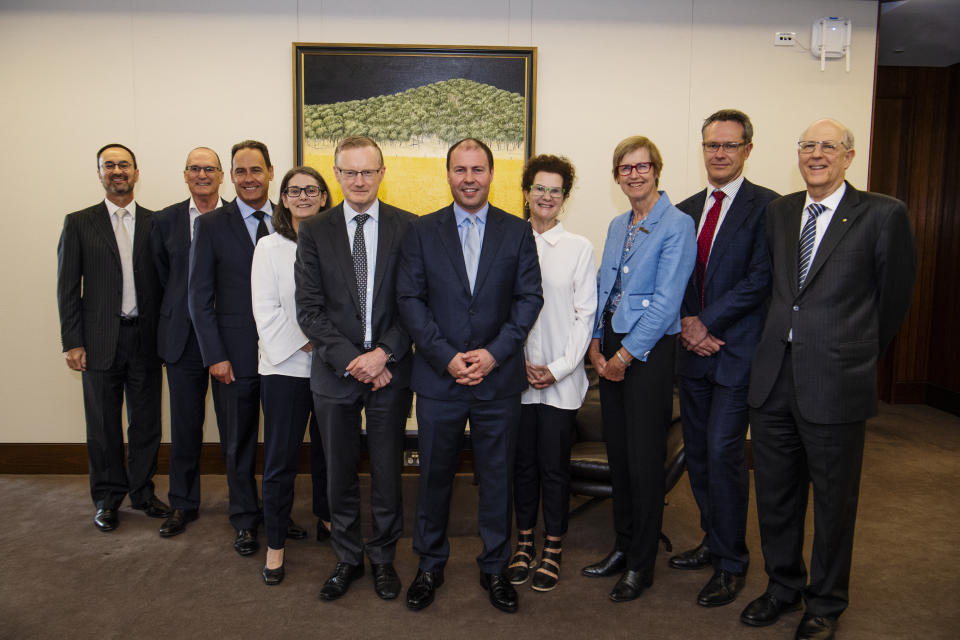'Long overdue': RBA decision-makers need to be 'overhauled'

The recent record of the Reserve Bank of Australia on meeting its target for annual inflation of 2 to 3 per cent is poor.
And this is not just the result of the COVID-19 recession, given that inflation was entrenched below 2 per cent prior to the pandemic hitting the economy.
The recent inflation data for the September quarter confirmed underlying inflation at just 1.2 per cent after a similar increase in the June quarter. These are the lowest annual readings for inflation on record.
Underlying inflation has been below the midpoint of the RBA’s target for six long years and has not touched the top end of the target for a decade which suggests there is a problem with the way the RBA has set monetary policy for a considerable period of time.
More from The Kouk:
Australia emerges from lockdown, but it'll be a jobless recovery
‘Disconcerting’: Australia’s $1 trillion debt explosion exposed
Inflation should spend the bulk of its time within 2 and 3 per cent and occasionally move outside that range when unexpected events hit the economy as the do from time to time.
That said, inflation should spend as much time above 3 per cent, when there is a random event, as it does below 2 per cent, when a shock hits the economy.
This has not been the case for more than a decade.
In the last few years, as the RBA has kept monetary policy too tight, it has cited a range of touchy-feely issues for its misguided stance.
The RBA was setting policy to stem house price growth, then it judged stable interest rates to be a factor that would boost confidence in the economy; financial stability (which was never defined) was another reason behind the decisions to hold off monetary policy easing even though inflation was consistently below target.
All those notions were wrong and somewhat laughable when you consider the bind it has got itself into now.
Needed: Structural, growth enhancing reform of the RBA
The structure of the RBA has not been altered for many decades.
It is long overdue for an overhaul.
The board that sets monetary policy (among other things) is made up of the RBA Governor and Deputy Governor, the Treasury Secretary plus six non-executive members who are appointed by the Treasurer. Other than the Treasury Secretary, which is an ex-officio position, the other members are appointed for a set term.
It is noteworthy that the non-executive appointees are nowadays likely to be business people and not expert economists.
There used to be representatives from the unions and academia, but that trend has fallen by the wayside – perhaps not coincidentally with the poorer performance of the RBA.
This shortcoming in the structure of the board may have been an issue in the misreading of the economy’s inflation pulse over the five or six years.
Four board members terms expire
The next year will see four board members terms expire. The Treasurer has the discretion to reappoint incumbents, but given the problems the RBA has had in meeting its targets, it might be wise for Mr Frydenberg to look for some fresh blood and an invigoration of its operations.
The four members are: Allan Moss (December 2020), Catherine Tanna (March 2021), Ian Harper (July 2021) and the current Deputy Governor Guy Debelle (September 2021).
Renewing the board with fresh appointments of people with knowledge, expertise and experience in economic analysis and an awareness of the changes that are occurring in the drivers of inflation, especially in labour market conditions, is overdue.
Another idea would be to start from scratch – have a monetary policy advisory board that brings a critical take on issues that are important to having economic conditions at a level that see the inflation target hit more often than not, with a keen eye on issues of financial risk and stability.
Cut them some slack
Setting monetary policy in the current climate is not easy. Covid-19 has made it difficult to read and then forecast economic conditions.
Interest rates are now close to zero and there are important considerations for cutting them below zero. Bond purchases and lending guarantees are a good example of how monetary policy can be more than just an interest rate target and recent changes in these areas by the RBA are most welcome.
That said, a reinflation strategy that boosts liquidity and sees inflation pick up is more important now than ever before.
The risk of deflation is real and full employment is a distant dream.
For the sake of the millions of people unemployed and underemployed, we all hope the RBA can find its mojo and reflate a depressed Australian economy.
An important step on that path might be to look at the RBA board and its failures in recent years, and to change the way it gets things done.
Make your money work with Yahoo Finance’s daily newsletter. Sign up here and stay on top of the latest money, economy and property news.
Follow Yahoo Finance Australia on Facebook, Twitter, Instagram and LinkedIn.

 Yahoo Finance
Yahoo Finance 